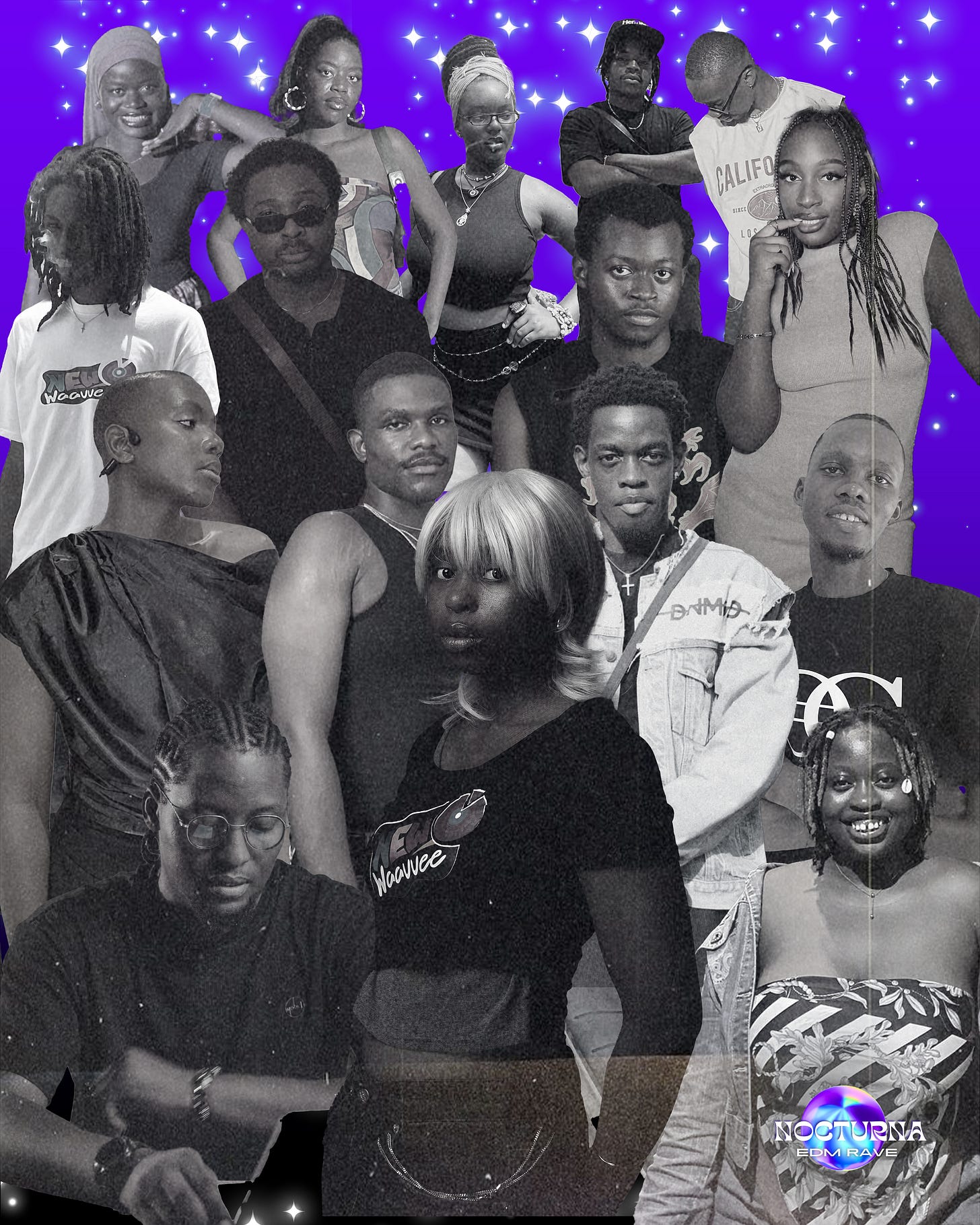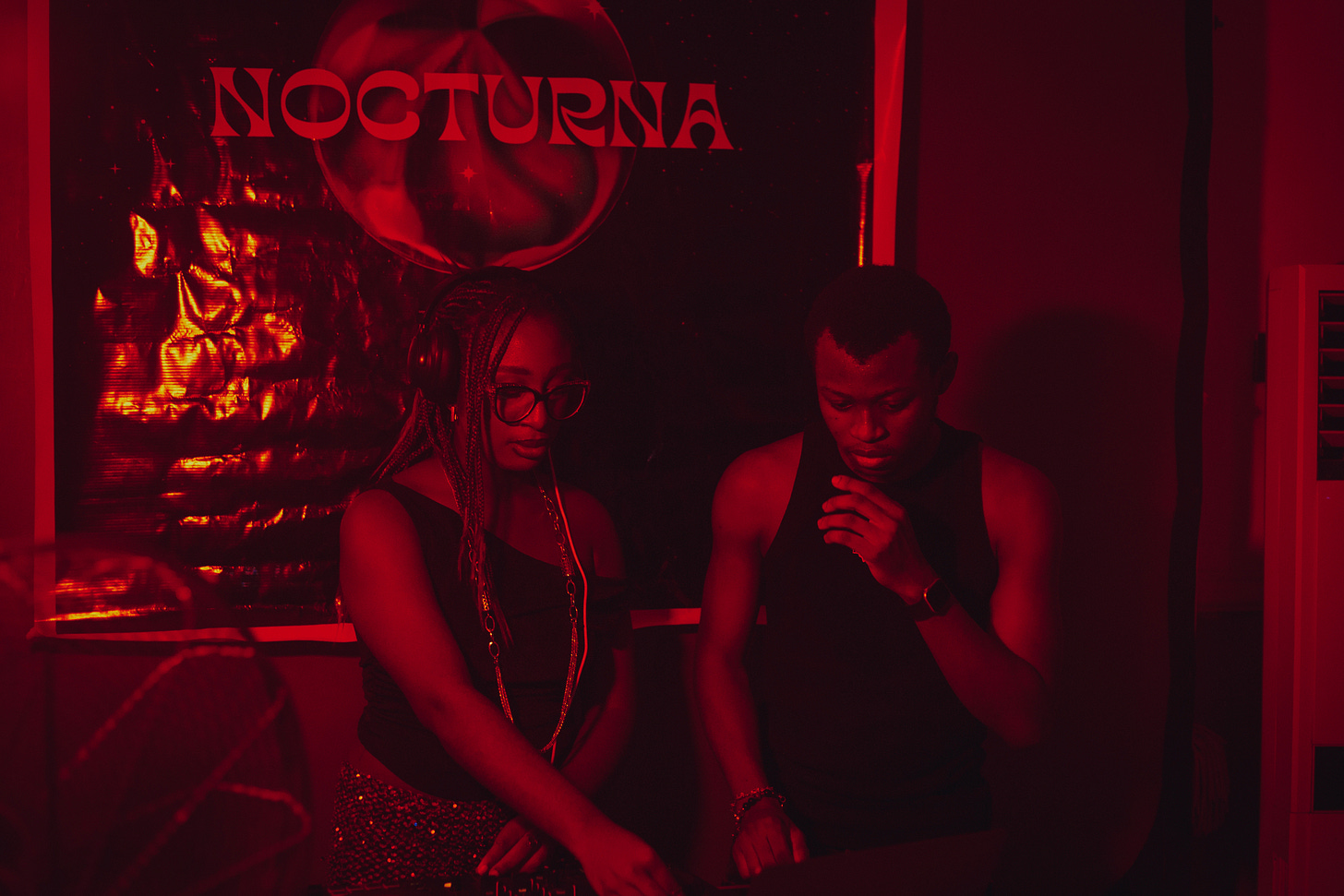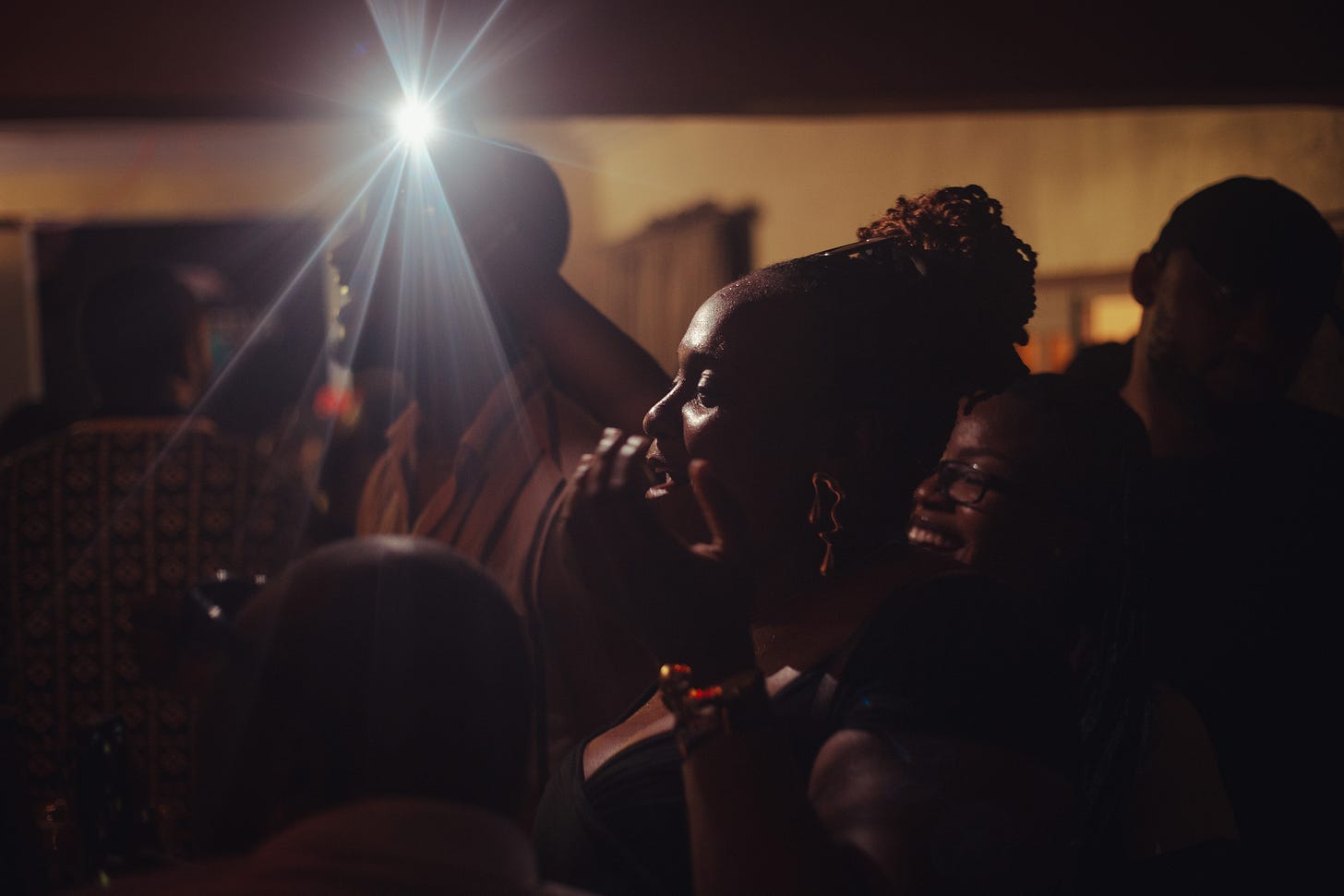
I’m someone who doesn’t know how not to get what they want. So when I found myself in Calabar in early May, after an April packed with back-to-back raves in Lagos and Abuja, I was already itching to be back on the dancefloor, shedding inhibitions to what we call “white people music.”
Beyond that yearning was a deeper craving: the need for a creative outlet where my love for planning and aesthetic detail could shine. That itch wasn’t new. I’d scratched it before by hosting small, self-funded parties. But it had been two years since the last one.
This time, I wanted something bigger. To host a proper rave, I needed more than passion—I needed resources. That meant putting a price on the experience and getting people to pay for it. That also meant spreading the word, and fast.
Recruiting Believers in the Vision
The first challenge was a paradox: I wanted this rave to cost none of my own money, while fully expecting it to be a financial sinkhole. My mission? To gather Calabar’s alternative crowd—people tired of the relentless loop of afrobeats and amapiano, bored of the bottle service club scene, and hungry for a space rooted in art, sound, and aesthetic. I wanted them on the dancefloor all night, caught in a dream.
So I reached out to potential sponsors. The first 50,000 naira came from a friend in Uyo who needed just the right excuse to visit Calabar. Within three days, I had a seed of 240,000 naira from five people.
Meanwhile, I was building the team. I reached out to people I trusted to connect with the exact crowd I wanted: Bajii, a pioneer of the alternative sound in Calabar; George, whom I first met at my last dinner night in the Calabar University Medical Students Association. He wore makeup to the event, which, to me, was a lovely protest; Cold Sound, the only Calabar-based DJ who specialized in house music; and, of course, my sister, Eyo, who had event organizing experience from her Anime City days.
With that initial fund, I booked three DJs, a sound engineer, a venue (thanks to Francis “Papi” Effa), and paid for banners and wristbands.
But the story of NOCTURNA is not just a narration of external events; it is my psychological experience. My analytical mind is compelled to break down the art of collaboration—the art of bringing a vision to life with the help of others and their conflicting visions.
Week One: Clashes and Constraints
The first clash was with myself: What would the ideal venue be? I dreamed of something industrial. A warehouse or an unfinished building. Even an outdoor setup. But none of these were viable because:
No warehouse
The logistics of bringing power to an incomplete building and getting people not to recoil at the unfamiliar were complex.
The rain in June in Calabar is not to be joked with. Outdoor spaces wouldn’t give the enclosed, sweat-slicked energy I wanted. Plus, there were safety issues, all-night permissions, and my very modest budget.
The only real option was a house, courtesy of Francis. It wasn’t a club (thank God), but I didn’t want it to be just a house party either. I hadn’t seen it in person, but my sister had made a video that showed it could comfortably hold 50–100 people. Still, when I shared it with the team, some hesitated. One person messaged privately, concerned. I had to reassure him: not everyone’s ever at the party at the same time.
While laying the groundwork for the event, I was also juggling marketing and promotion, and faced some resistance there too. One group member, when I reached out privately about their lack of participation, said they didn’t like how I was handling the campaign. It felt, to them, too graphics-heavy and lacking a human touch. I explained that I had already lined up people to create video content and that the more personal, people-forward elements were part of the plan for the second week of promotion. I asked why they hadn’t voiced their concerns earlier, and asked them to trust the process.
The truth is, there was no formal strategy. No sleek powerpoint document, no Google Sheets content calendar. Just a constantly evolving idea of what felt right for the brand and its audience—housed entirely in my head. Scribbles in my Notes app, scattered reminders, color-coded calendar entries, and instinct. That was my arsenal in this psychological warfare against/for the Calabar alternative scene.
I paid for Canva Premium and designed the first batch of media. The response was electric.
Week Two: Shifting Gears and Group Dynamics
By the second week, Daniel Okorie (Topdsgn) had joined and taken over graphics, freeing me up to handle the other thousand tasks. We’d seen the venue, and George agreed to help with lighting. Kegbu and I hosted a successful X Space with Cold Sound.
But something was simmering beneath the surface. The NOCTURNA team (at the time, still the “promotional team”) wanted more creative input. And while I valued initiative, I began to feel overwhelmed. Ideas came in with no offer of execution or funding. Most were things I’d already considered and discarded due to constraints. It felt like people were tripping over a blueprint they couldn’t see.
So I renamed the group, shifted my role from “host” to “curator,” and sent a mini-rant: if you want to contribute, contribute!
From there, the energy shifted. Ideas became more realistic. Collaboration took root.
By mid-week, the weight of the project crushed me. I was talking to more people than I had in years: people I wanted video content from, vendors, team members, potential guests, etc. I was handling admin, checking out people who had RSVPed, posting on social media, and sending out emails, all while working a demanding day job and sticking to my Substack schedule.
My sister handled vendors, Ishoyor helped with video content, and Catch the Gigs partnered on a free ticket giveaway.
But the stress got to me. I became… a bitch.
Since childhood, I’ve known that the best way to manage people is to be a sweet bitch. But I was losing the sweet. Thankfully, my team showed up with grace. Emmanuel Esuabana messaged me privately just to offer support. That empathy sparked the idea of a NOCTURNA x New Wave fashion collab.

Week Three: Doubt, Deadlines, and the Dance with Control
By the third week, a rhythm had set in. Ticket sales were trickling in, the endless planning was winding down, and anticipation was rising. But the to-do lists still stretched endlessly, and my days blurred into an ongoing cycle of calls, messages, and last-minute fixes. The day job I mentioned earlier? It was threatening to consume me. I caught myself fantasizing about running off into the sunset, leaving behind all my commitments.
Doubt crept in constantly. Would this actually work? Was the hype greater than the product? Would people have a good time?
As the event drew closer, new problems emerged. The AC at the venue broke down, and I had to ensure uninterrupted power supply. My sister had assured me there was 24-hour electricity on weekends, but this is Nigeria. Hope is not a strategy.
I needed a generator—a powerful one—that could handle a standing AC unit, multiple fans, a heavy-duty sound system, and lighting. I initially leaned on the venue host to handle the power logistics and recommend someone I could pay. But when nothing moved fast enough, I took over.
My electrician mentioned a little-known option: negotiating with power officials for a temporary supply. I was ready to try anything—until I learned it would cost 100,000 naira. Where was I supposed to get that from when I was barely breaking even?
So I reached out to my network again, hoping for a miracle. And I found one. A family I’d known for years had a portable, Japanese-made generator—over 7 kVA—and they let me use it for free. All I needed to do was service and fuel it.
I took time off work from June 7th to 9th. The rave was set for Sunday the 8th. By Saturday, we were setting up, and I was at my wits’ end. Every decision: where to put the DJ booth, where the drinks vendor should go, how to hang the projector or set the lights—became a group discussion. I didn’t want to seem dismissive. I valued the team’s input. But what I noticed was this: after every round of back-and-forth, we almost always circled back to my original plan.
That might sound like a brag, but curating NOCTURNA confirmed a long-held suspicion—I think about aesthetics, function, and audience psychology in a way most people don’t.
That Saturday was long, fun, and tiring, and I was a bitch. I fixed the AC and discovered the generator had a fault. I fixed the generator. Setup would continue the next day before the event time.
NOCTURNA
By the day of the event, I was running on fumes. I hadn’t slept properly in days, and the exhaustion was catching up with me. Even though I’d closed the RSVP links the night before, my phone kept buzzing. Team members were still asking me to add last-minute guests to the list or send out purchase links. It felt like the work would never end.
Many might wonder why I chose to use the RSVP route. There are a few reasons, but the public one is that it gave me the opportunity to vet people who would be coming, as it would be happening on private property, and I wanted a specific crowd. Because my objective was not profit, I was able to take this stance.
And somehow, despite everything, the night came together.

My external and internal bouncers arrived on time, and the ticketing guy handled everything smoothly and efficiently. The sound engineer was late, but still arrived before the event. The two projectors, despite their limitations, filled the room with trippy visuals. The vibe was electric.
Most importantly, they came: the crowd I had envisioned—the gorgeous, alternative, expressive people I had hoped to gather under one roof. They were stunning. The energy was surging. Drinks flowed. The food slapped. The heat was just enough to feel alive. And the smoke room quickly became my favorite place to be.
I even had moments to do my little dance in front of the DJ booth—sweaty, giddy, free. When the music cut out twice during the second DJ’s set, I made my rounds, chatting with guests, holding the energy together. It wasn’t perfect. It wasn’t polished.
But it was beautiful.
Author’s Note:
This was a week behind schedule, but I’m proud of myself for being able to publish it anyway.
Thank you so much to everyone who read this, who came to the event, and who was part of the organization's core and periphery.
You can check out the media from the event on the rave’s Instagram page.
Currently working on another project that I believe will be an even bigger success. Nocturna Film House will be screening a short, surreal drama production titled Banana Boat on the 25th of July. This screening will launch our filmmaking and consuming community. But more on that later.
If you want to read about the event itself from the perspective of a guest, Eve wrote a fantastic, immersive piece that was published just after the event in Iko Africa.
If you enjoyed this entry, please leave a like. I’d love to know your thoughts.
Till next time.









You did amazing
Absolutely love how detailed this is, almost feels like we are planning Nocturna over again.
P.S.
This your sister no get name?